"AFM": MXene is first used in polymer light-emitting diodes (PLED)
QQ Academic Group: 1092348845
Detailed
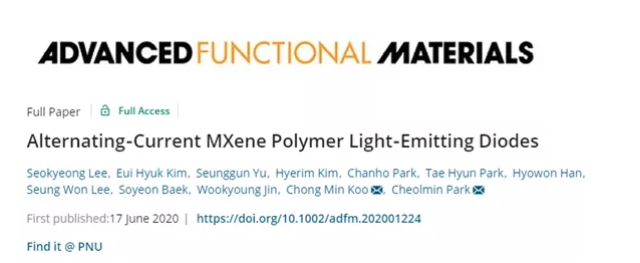
Displays with self-luminous display characteristics have broad application prospects, such as OLED (Organic Light Emitting Diode) displays used in Apple mobile phones, and QLED (Quantum Dot Light Emitting Diode) displays used in LG TVs, which are currently commercially available. Unlike traditional LCD display methods, this type of display technology does not require a backlight and uses very thin organic, quantum dot or polymer material coatings and glass substrates. These materials can self-luminesce when there is current passing through them, so this material can be lighter and thinner, with a larger viewing angle, and can significantly save power consumption.
MXene is a two-dimensional transition metal carbide and nitride material with high conductivity and optical transparency. Its appearance is similar to a potato chip stacked on top of one another. At present, such materials have been applied in many fields, such as energy, catalysis, medicine, etc., and have attracted worldwide attention. However, whether this material can be used in the field of light-emitting diodes has not yet been explored.
Recently, Professor Cheolmin Park of Yonsei University in South Korea and Professor Chongmin Koo of the Korea Institute of Science and Technology reported the use of MXene as a PLED (Polymer Light Emitting Diode) for the first time on AFM. Under the AC frequency of 1kHz, the turn-on voltage, current efficiency and brightness of this PLED can reach 2.1 V, 7 cd A−1, and 12547 cd m−2, respectively. This solution-processable MXene material can be easily prepared on a polymer substrate, and has better performance than traditional materials such as carbon nanotubes and reduced graphene oxide.
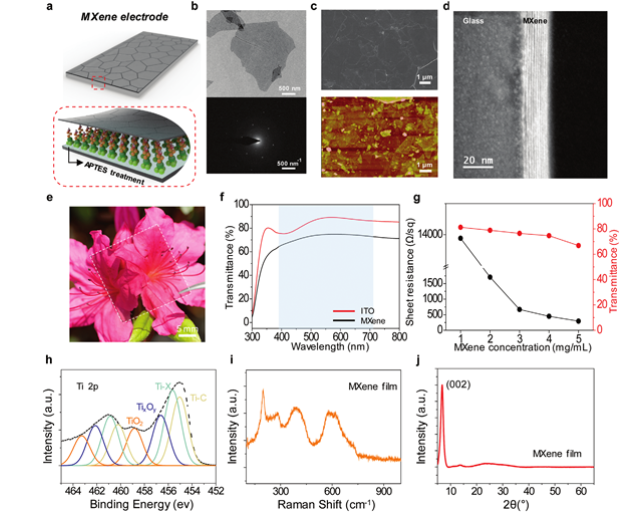
Figure 1. Characterization and performance of MXene thin-film electrodes on glass substrates.
Article Introduction
As shown in Figure 1, the tiny groups derived from APTES and MXene flakes have strong electrostatic interactions. APTES with amine-terminated groups is very useful for forming a thin and dense MXene layer on glass or polyethylene terephthalate (PET). Scanning electron microscope SEM and atomic force scanning image AFM show that the surface roughness and film thickness of this MXene film can reach 2.725 and 17.5nm, respectively, and the film thickness can be easily controlled within 30~10nm. PLED uses photolithography technology to prepare a new type of fold on the transparent bottom electrode of MXene, which mainly includes a hole transport layer, a super yellow light emitting layer, and a top electrode stacked in sequence. When DC voltage is applied to the MXene electrode, the device will become unstable in an instant. However, it is interesting that good results can be achieved when the experiment is conducted under alternating current. It can be seen from the results in Figure 2 that at a frequency of 1khz, with the increase of the applied AC voltage, the brightness of the PLED also increases. At the same time, the maximum brightness of the PLED can reach 12 500 cd under the bias voltage of 35 Vrms. m−2.
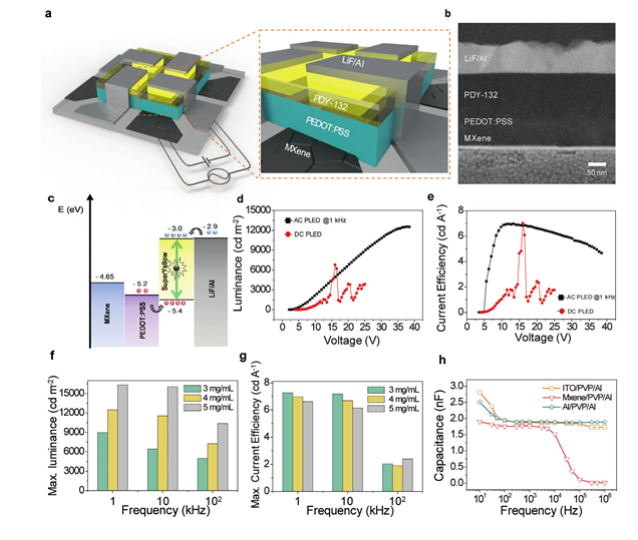
Figure 2. Device architecture and its electroluminescence characteristics
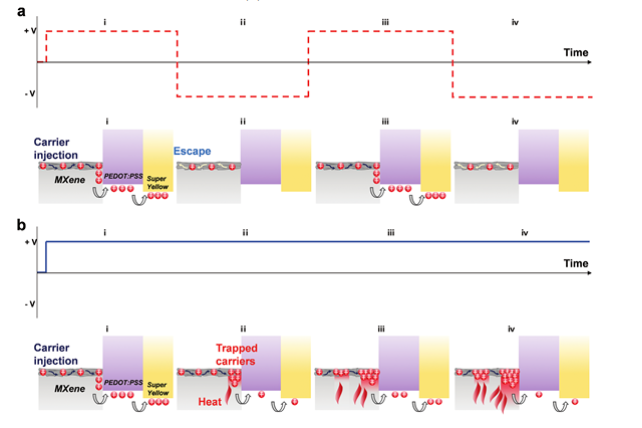
Figure 3. The operating mechanism of MXene PLED under AC and DC power.
The author guesses that MXene can be used as a high-performance PLED material for two main reasons. (Figure 3) On the one hand, the frequent polarization reversal of the AC field can significantly reduce the amount of injected charge accumulated in the defect state of the MXene electrode composed of a large number of 2D sheets. The injected carriers are trapped in the surface ends of the Ti3C2 sheet and the metal vacancies, acting as space charges, which can hinder the subsequent injection of carriers. By applying an AC bias voltage, the trapped carriers can be effectively extracted from the defects when the reverse bias voltage is applied, and when a forward voltage is subsequently applied to the hole transport layer, the generated carriers can be easily injected . On the other hand, during AC operation, the heat generated by a large number of chip contacts and the resistance of the accumulated charge in the defect area can be significantly suppressed. Due to the extension of the operating time and voltage, the equipment is prone to frequent failures under normal DC operation and cannot effectively dissipate heat.
Further frequency dependence and capacitance testing confirmed the relevant thesis. When the frequency is too high, the transient inversion time is too short, the trapped charge in the defect cannot be captured, and the subsequent charge injection will also be restricted by related restrictions, which will reduce Relative brightness. Its capacitance will have a sudden drop in capacitance at a frequency of about 10 kHz and an AC voltage of 1V. The two types of data mutually confirmed the relevant results. Real-time temperature detection shows that in 35 V DC mode, it can rise to about 145°C within 1 minute, while in AC operation, the operating temperature of the device can always be maintained at 50°C, which shows that under AC voltage, its Can effectively dissipate heat. Under high driving voltage, its heat dissipation is still effective, while under AC operation, its light intensity performance is gradually reduced, and under DC operation, its device performance will also be significantly reduced.
Figure 4. Mechanical flexibilit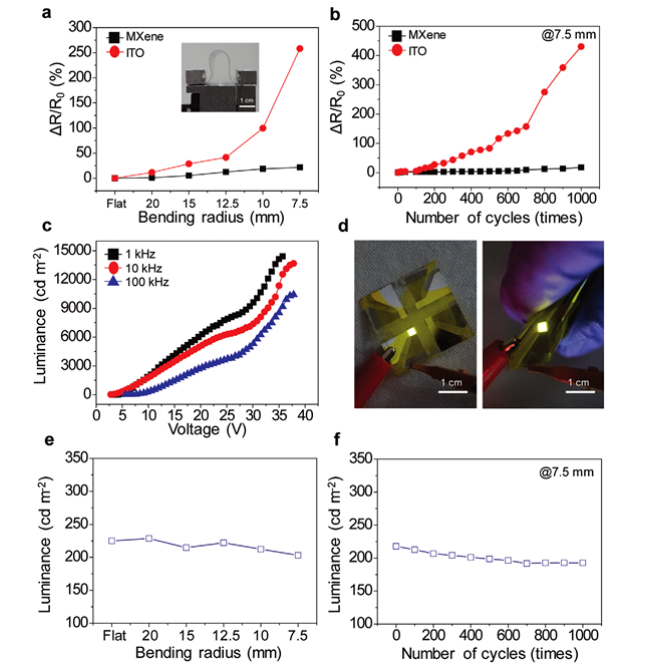 y test of MXene PLED.
y test of MXene PLED.
Under the condition of mechanical bending and folding, the conductivity of PLED is also a very important parameter. As shown in Figure 4, compared with ITO electrode, MXene material has good resistance to bending. When the bending radius is 7.5 mm, it can still maintain a lower initial resistance. Compared with ITO, it has a lower initial resistance after 1000 cycles. , The resistance has not increased significantly. The flexible MXene prepared on PET has excellent AC frequency dependent luminescence. Even in the case of extreme curvature, this device has only a slight reduction in luminous brightness (maintain 90%).
to sum up
As a solution processable, large area, flexible and transparent PLED based on MXene material, it exhibits unprecedented high performance. Under optimal AC conditions, the switching voltage, current efficiency and brightness of PLED based on MXene material can reach 2.1V, 7cd A-1 and 12547cd m-2, respectively. In the state of alternating current, a matrix uniformly assembled by 2D MXene sheets is the key to ensuring high luminescence performance. The excellent performance of MXene material on PLED is better than the reported carbon nanotubes, reduced graphene oxide and Ag nanowires, etc., making it very promising to become the next generation of flexible and transparent display materials.
Article source: Frontiers of Materials Science
This information comes from the Internet for academic exchange only. If there is any infringement, please contact us to delete it immediately.
- Previous: AEM: Femtosecond laser
- Next: MXene breakthrough: Na


 mxene academic
mxene academic